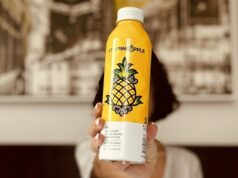
NATIONAL REPORT—Carpet cushion, also known as underlayment, has been one of the greenest products available to the lodging industry for years. More than 80 percent of carpet cushion sold today is made from bonded polyurethane foam cushion (“bonded” or “rebond”). It comes from a combination of salvaged, scrapped or recycled polyurethane foam generated during the making of furniture, bedding and other products—cushions for car seats, for example. Polyurethane is ground up into small pieces, bonded under pressure with a binder into blocks, and then cut into thin slices of different thicknesses and widths. Used carpet cushion is also recycled and used to make new product. According to G. William Haines, executive director of the Carpet Cushion Council, 400 million pounds of cushion is recycled annually. All of these efforts help to divert waste from landfills.
Polyurethane is not the only source of material for carpet cushion and its backing. Rubber from old automobile tires, oil from soybeans, plastic from old beverage bottles, and even coal ash from power plants are also finding their way into some suppliers’ offerings. Synthetic fiber and rubber cushion have been the leading ingredients in carpet underlayment used in the hotel industry for the last 30 years. Both synthetic fiber and rubber cushion are either made out of recycled material or are capable of being recycled after use.
As manufacturers focus on recyclability, the percentage of recycled content in their products, and the availability of recycling programs, so too are they concentrating on eliminating the emissions of volatile organic compounds (VOCs). As part of the Carpet and Rug Institute’s (CRI) Green Label program, cushion products that meet current emissions criteria can display the program’s green and white seal. Products are regularly tested for compliance. Commercial architects and green builders can earn LEED points by using Green Label products.
In a lodging establishment, quality underlayment that is environmentally friendly is important. Hotels typically carpet thousands of square feet of flooring area. Carpet cushion should be considered from a sound management, waste management and indoor air quality perspective, as well as from an energy management one. Most carpet cushions are natural insulators in that they block the movement of hot or cold air just like wall insulation. (To access a document that explains the thermal values—R-values—of carpet and cushion, click here.)
Sample of Supplier Innovations
From a green perspective, what are some of the carpet cushion industry’s leading suppliers doing that is different? Here are just a few examples:
At last year’s HD Expo, Healthier Choice introduced its new line of low-VOC carpet cushion called Foundation Contract Carpet Cushion. It has emissions nearly 50 times lower than the CRI Green Label limit and offers antimicrobial protection against mold and mildew to achieve a no-odor environment. The four-product family is made from frothed polyurethane, each designed for different applications based on type and usage level.
Earlier this year, Healther Choice announced that it will use BiOH polyols, a soy-based ingredient, in its carpet cushion. The brand name is Platinum Plus ECO carpet cushion. A preliminary life cycle analysis indicates that replacement of petroleum-based polyols with BiOH polyols results in 36 percent less global warming emissions, a 61 percent reduction in non-renewable energy use, and a 23 percent reduction in total energy demand. Every million pounds of BiOH polyol produced to replace petroleum-based polyols avoids the use of about 2,200 barrels of crude oil. According to Healthier Choice, it offers the only Greenguard Indoor Air Quality Certified carpet cushion.
Dura Undercushions Ltd. has been manufacturing its underlayment from recycled automobile tires for years. It includes 85 percent post-consumer recycled content. The company purchases the rubber as crumbs and mixes it with latex to create its cushion in different thicknesses. The product is 95 percent recyclable, according to James Wilson, sales manager for the U.S. division of Dura Undercushions Ltd.
Daltonian Closes Recycling Loop
Daltonian Flooring offers carpet cushion made from the environmentally-sensitive compound, BioCel. Developed by Universal Textile Technologies, BioCel is an award-winning combination of two “green” components: BioBalance polymers, which are made from soybean oil, and Celceram, a highly-refined, recovered form of the mineral lignite, a.k.a. coal ash from power plants. The backing for BioCel carpet cushion, according to Gary Mauldin, president of Daltonian Flooring, is made from recycled pop bottles.
Mauldin says interest in his company’s green products has been growing each month. “It is a little more expensive than traditional polyurethane pad,” he says. “It can be recycled. As the green movement has progressed, it has helped our green lines.”
When purchasing padding for carpet or any other type of flooring, be sure to ask about the product’s content and recyclability. And if you are going to be tearing up old cushion, make sure that it is recycled. There is a large infrastructure in the United States to support the recycling of used padding.
See the Carpet Cushion Council or Polyurethane Foam Assn. for more details.
Glenn Hasek can be reached at editor@greenlodgingnews.com.






